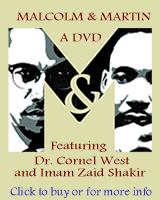
|
|||||||||||||||||||||
|
The current issue is always free to all readers If
you need the access available to a |
|
 |
|
On Thursday, June 7th, the New York Times newspaper carried three large obits. While I did not count words or column inches, eyeballing indicates that the one at the top of the page occupied not quite one-third of the page. It was, in other words, of significant length, and one presumes that placement at the top means it was considered the most important one by the paper. (Is this incorrect?) The middle one seemed to occupy not quite a sixth of a page, which is also of significant length. The bottom one occupied, roughly, a bit over one-ninth of the page, which is not chopped liver. Who, then, were these obits about? The middle one was about Martin Meyerson. He was described as having coauthored, in 1955, the "seminal book" on the (racially isolating) effects on the poor of public housing projects comprised of "tall buildings packed with small apartments." He had taught at prominent schools: the University of Chicago, Penn, Harvard and Berkeley. He had been appointed Chancellor at Berkeley in 1965 during, and had helped to calm the Free Speech Movement at Berkeley, had been President of SUNY Buffalo from 1966-1970, and then was the President of Penn from 1970-1981. (I personally remember reading his name during that period.) While at Penn, he completed the full integration of women into the University and began its first affirmative action program. Obviously Meyerson was an accomplished and prominent guy, and one can understand giving him a major obit that occupied the second spot, on about a sixth of the page.
The obit on the bottom was, in essence, a human interest matter. It was about an ordinary native New Yorker named Arnold Lappert who, as an army radio man in Hawaii in 1942, had received the last messages from Corregidor, including the very last message sent just before the surrender. The messages had been sent by a radioman on Corregidor named Irving Strobing, who was also a native New Yorker. Both Lappert and Strobing were Jewish as well as New Yorkers. They were brought together at a news conference in Manhattan in 1946 by the Jewish War Veterans, and later reenacted their experience at a pageant at Madison Square Garden which related the contributions of Jews in America's wars. Lappert's obit, as said, was a human interest story, especially for a newspaper published in a city with so many Jews - it is the New York Times, after all, even if it is also a national newspaper. So it was comprehensible that Lappert's obit received the third billing and one-ninth of a page.
So if it is comprehensible that the Meyerson and Lappert obits were given significant length and placement, whose obit was at the top of the page and was given about a third of the page? Who was it that was of sufficient importance to merit this? Jim Clark. That's right, Jim Clark, the brutal Selma, Alabama sheriff who beat the living crap out of civil rights demonstrators in the 1960s. Jim Clark, who punched a civil rights leader so hard that he broke his own hand. Jim Clark, who joined in what has gone down in history as Bloody Sunday (March 7, 1965), when marchers trying to cross the Edmund Pettus Bridge were violently attacked. Jim Clark, who wore a "lapel button emblazoned with a single word: 'Never,'" with "A billy club, pistol and cattle prod often dangl[ing] from his belt." Jim Clark, who said as recently as last year that, "Basically, I'd do the same thing today if I had to do it all over again." Jim Clark, that fine upstanding citizen who, a decade after the civil rights movement, in 1978, was indicted by a federal grand jury for conspiracy to smuggle Mary Jane (marijuana) and spent about nine months in the slammer. This is the fine individual who, the Times believed, deserved an obit twice the size of the highly accomplished Martin Meyerson's (and more than twice Lappert's) and placement at the top of the page. Wow!
What can be said in favor of the Times peculiar (shall we say) news judgment regarding placement and length? Well, I suppose that, if the Times were defending its actions, it would say something like the following (through its apologist-in-chief Bill Keller?): "As said in the obit, Clark's violence contributed to the success 'of the voting rights movement.' As also said in the obit, Bloody Sunday was called 'an American tragedy' by President Johnson and 'was considered a seminal force behind Johnson's signing of the Voting Rights Act in 1965.' Clark, however inadvertently, played a major, if despicable, role in some of the most important events of our time. We cannot choose to omit and shorten an obit because the deceased, though a person whose actions were of great consequence, was a bad person - should we have carried only short obits of Hitler or Stalin or Mao or Nixon? What's more, it is no bad thing to remind people of the terrible things done by Southern officials of those days." All of this might at first sound pretty persuasive. But upon reflection, no. The basic facts that made Clark "worthy" (a strange word in the circumstances) of the Times' obit could have been stated in just a few paragraphs. There was no need to "glorify" Clark, as it were, by the very act of putting his obit at the top of the page and giving it a third of a page, by saying, as the Times did, that news accounts from the period said he could be courtly and charming in private, by talking about his service in the war, by explaining how he came to be the sheriff, by telling what job he held after being sheriff, and so forth. This was a truly bad human being, a vicious bum. He beat the living shit out of civil rights demonstrators. He viciously abused them physically in other ways. His actions were so terrible that they were instrumental in securing enactment of the Voting Rights Act. This guy's obit doesn't deserve to be ahead of Martin Meyerson's or Arnold Lappert's. It should have been about a quarter or a fifth of the size it was, and it should have been at the bottom of the page rather than at the top. One has to question a news judgment that "rewards" evil by size and placement, while placing achievement lower down and giving it less play. BC columnist Lawrence R. Velvel, JD, is the Dean of Massachusetts School of Law. Click here to contact Dean Velvel. |
|
| Home | |
| June
14, 2007 Issue 233 |
||||||||||||||
|
||||||||||||||
| Printer Friendly Version in resizeable plain text format | ||||||||||||||
|
|
||||||||||||||
 |
||||||||||||||
 |
||||||||||||||
 |
||||||||||||||
| |
||||||||||||||
| |
||||||||||||||



































